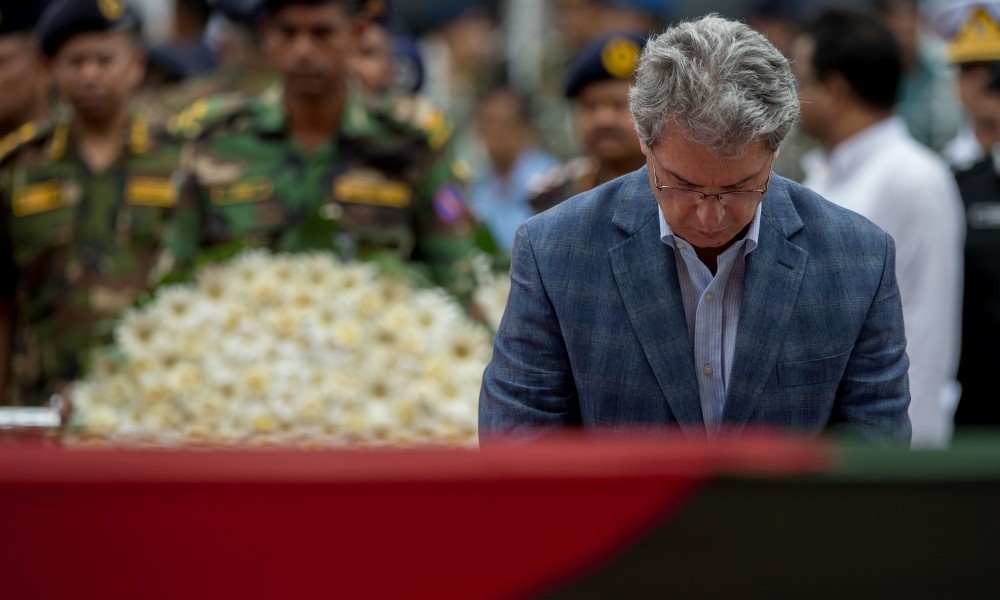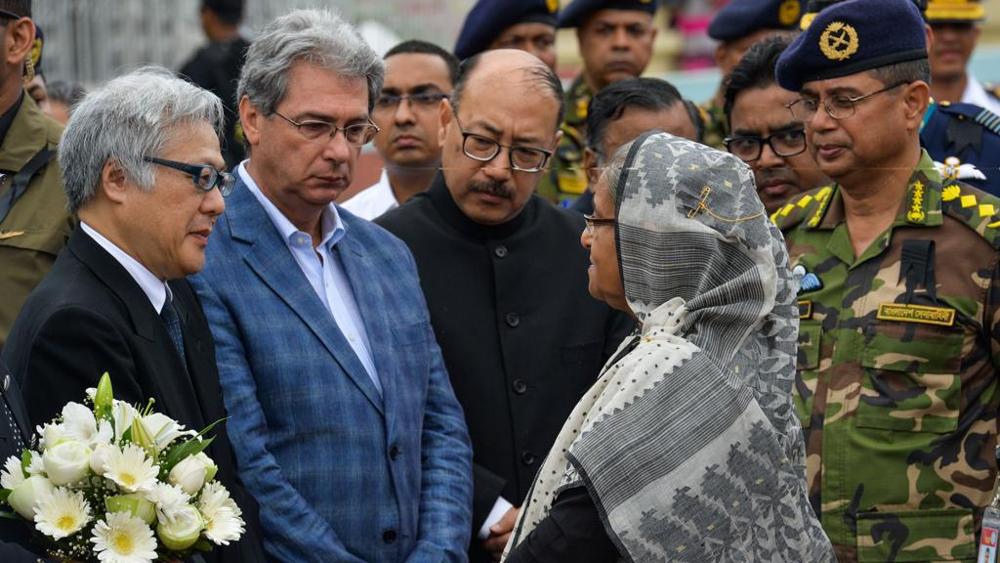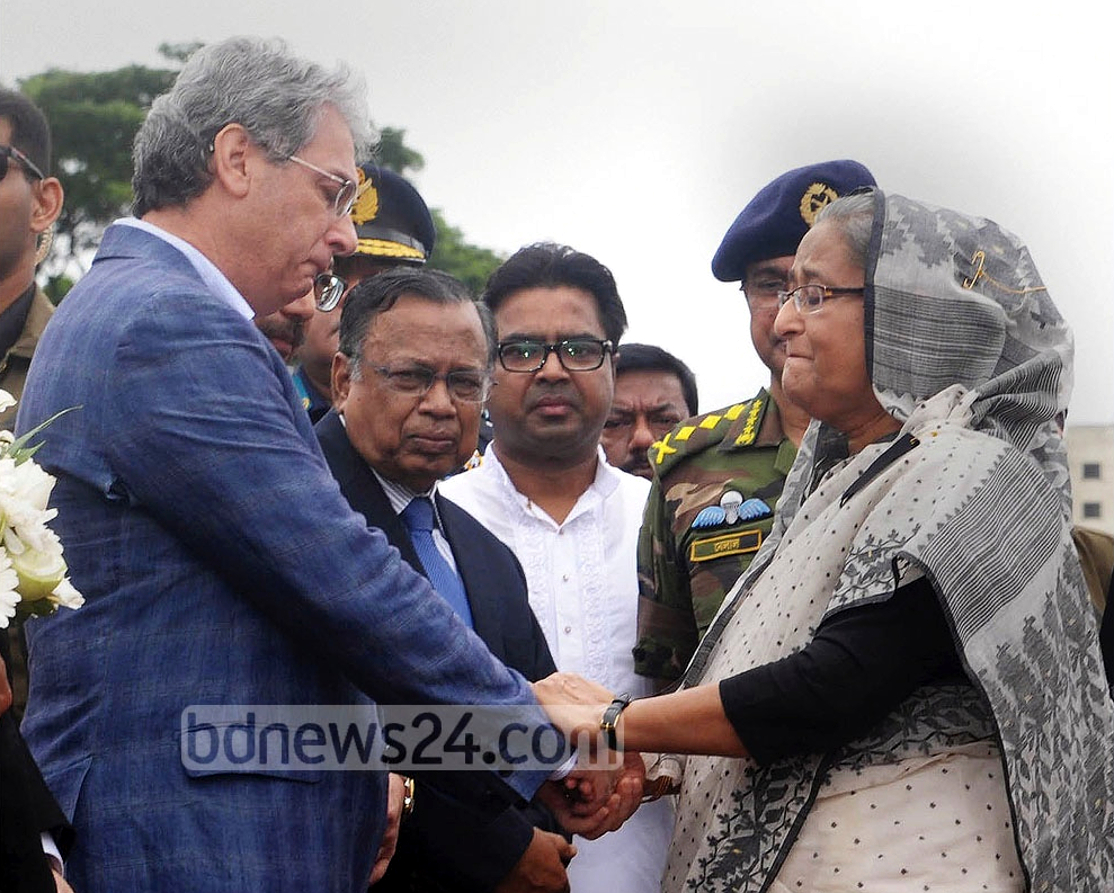Institutional Message of the Ambassador of Italy in Bangladesh, Mario Palma. Published on the Daily Star.
September 11, 2001, attack on Twin Towers in New York. We all remember the paralysing aesthetic of the live image of the attack on the second tower that the global news channels continued for days to air. It was clear to everyone, first of all to the perpetrators themselves, that in the future, another heinous “performance” of that dimension would have been unimaginable. But it was equally clear to Al-Qaeda ideologists and propagandists first, and, thirteen years later, to the Islamic State of Iraq and Sirya (ISIS)’s, that they would count on a fatal weapon to expand its influence and ability to attract new adherents. This would be the multiplier effect that image iteration — also related to “smaller” sheddings of blood — would have had on the global audience of the new media.
Once the propaganda apparatus of the ISIS had the terrorist act transferred on to the web, the measure of its success shifted from the spectacular to the terrifying brutality of live feeds of slitting throats and to its ability to stir their supporters into action at the sight of blood, making them the leading roles of new “performances”, individual or collective, to be transferred from the web to physical scenarios. That this strategy of terror was able to find local support, as early as the beginning of 2015, even in Bangladesh, is an established fact. The phenomenon of radicalised web chats for the purpose of proselytising and the clear-headed action plan focused on “Bengal” made public through the issue No.12 of Dabiq, the ISIS magazine, do not seem to have been given adequate importance. Hence the total unpreparedness of local police forces and the shock experienced by the people when, on the evening of July 1, 2016, the terror “performance” suddenly materialised in Dhaka’s diplomatic quarter.
I was having an aperitif with some guests in the lounge dominated by a huge acrylic on canvas — a hymn to life and to its colours by the late friend and master Giancarlo Vitturini — when the news reached my residence of an attack at Gulshan’s Holey Artisan Bakery, a restaurant mostly frequented by expats, quite popular with local customers and the favourite hangout for a group of Italian business people. I left the residence and got to the Embassy in a flash, turned my office into a situation room in a few minutes, and had the scattered staff gather into a “Crisis Unit” in order to monitor the development of what turned out to be a terrorist act planned in the smallest details and then claimed by the ISIS.
As time went by, on the white wall on the opposite side of my desk — normally home to a drawing by the Italian artist Mimmo Paladino showing Rabindranath Tagore “looking at a coloured poetry” — my mind’s eyes began to see blurred images of death. I sensed that the killing of Italian and Japanese hostages could already have taken place. This was soon to be corroborated by the flux of the images of bodies torn in blood puddles, uploaded and distributed by the webmasters of terror. It was only the beginning of a unending, tragic night in which five young “actors” drugged and bound to die, directed from outside or perhaps supervised on the spot by other militants, would go for another grim “performance”, where they would play the role of self-appointed inquisitors and executioner vis-à-vis young local hostages.
The black colour in which the Caliphate’s Bangladeshi recruits were dressed up — associated with the black flag brandished by ISIS and now as symbol of the alleged rebirth of the caliphate at Raqqa — is now more commonly and universally perceived as a sign of the most regressive orthodoxy, as a plain denial of beauty, art, music, shortly a denial of life. An alien ideology, incompatible with the cultural syncretism of a country, Bangladesh, where people love to dress up in the colours of the rainbow. I knew, to some extent, only some of the Italian victims, namely Claudia D’Antona, Nadia Benedetti and Adele Puglisi. They and their Italian colleagues were unanimously viewed by their Bangladeshi business associates and friends as being much in love with this country and its people [ndr. One of the victims was even a member of a group lawsuit against the director Belpietro for a newspaper headline that had offended the Islamic terrorists. What a horrible, fatal coincidence that she was one of the most tormented victims by the Jihadists]. I also knew Ishrat Akhond and her love for art and cinema and I had met once also the young Abinta Kabir, grand-daughter of a wonderful couple of art lovers and patrons. I had not the chance to meet Faraaz Hossain, the young man who heroically refused to abandon his two friends when the terrorists decided to release the other Muslim hostages. In his memory a tree has been planted on July 15, 2016 in the “Garden of the Righteous” located within the premises of the Italian Embassy in Tunis. Deep is the void that all the victims have left in our hearts, but their attachment to life and the joy of living will be forever with us.
One year after the tragic event, one night in the silence of my residence, I stood for a while to look carefully at the large acrylic painting by my friend Giancarlo. The vision evokes a big tree of life: the trunk vigorously emerging from the ground and stretching out to the sky with its branches to capture the light and cosmic energies. Its trunk, branches and leaves stand out against the sky showing all the six pure colours that form the three pairs of opposite colours: black and white, green and red, yellow and blue. As every artist knows, they can, by mixing, get all the other colours in endless combinations. Infinite, as the nuances of human relations, beliefs and cultural expressions. They represent the colours of life, as Bengal Foundation’s founder Abul Khair — Litu to his friends — puts it. The colours of the beautiful life we have to lead the way Nadia, Claudia, Adele, Ishrat, Abinta, Faraaz and all the others who are no more, had taught us to do.


